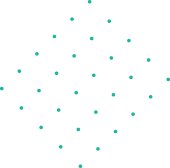Leading Data Science Instructor Hyderabad
In the world of Python programming, lists and arrays are two widely used data structures. While they may seem similar at first glance, each has unique features and use cases that make them suitable for different scenarios. Understanding these differences is crucial for writing efficient and effective code, especially when working on data-intensive projects. Whether you’re an aspiring developer or a seasoned data scientist, knowing when to choose a list or an array can significantly impact your program’s performance. This blog aims to shed light on the fundamental differences between Python lists and arrays, explore their pros and cons, and guide you on when to use each. We’ll also address some of the most common questions about these two data structures. If you’re studying under the Leading Data Science Instructor Hyderabad, this topic is a must-know for mastering Python and data manipulation.
What Are Python Lists and Arrays?
Python Lists
A Python list is a versatile, built-in data structure that can hold items of any data type. You can store integers, strings, or even a mix of both within a single list. Lists are incredibly flexible and allow various operations, including slicing, appending, and nested structures.
Python list is a built-in, flexible, and dynamic data structure that can hold items of various data types, including integers, strings, and even other lists. Lists are ordered, meaning the elements have a defined sequence, and they are mutable, so you can add, remove, or change elements after creation. Lists are highly versatile and commonly used for tasks that require heterogeneity or quick prototyping.
Features of Python Lists:
- Dynamic Size: Lists can grow or shrink as needed.
- Heterogeneous Data: Can hold elements of different data types.
- Indexing: Allows access to elements using zero-based indexing.
- Flexibility: Supports a wide range of operations like concatenation, slicing, and nesting.
- Built-in Methods: Includes methods like .append(), .remove(), .sort(), and .reverse().
Python Arrays
Arrays, on the other hand, are available through the array module or libraries like NumPy. Unlike lists, arrays are designed to store items of the same data type, making them more memory-efficient and faster for numerical operations. They are often the go-to choice for scientific computing and data analysis.
A Python array is a collection of items stored at contiguous memory locations. Arrays are available through the array module or libraries like NumPy and are optimized for storing and manipulating numerical data. Unlike lists, all elements in an array must be of the same data type. This restriction allows arrays to be more memory-efficient and faster for operations involving large datasets.
Features of Python Arrays:
- Uniform Data Type: All elements must be of the same data type.
- Memory Efficiency: Stores data more compactly compared to lists.
- Numerical Operations: Supports vectorized operations for numerical computations (especially with NumPy).
- Indexing and Slicing: Offers fast and efficient access to elements.
- Advanced Functionalities: Includes mathematical operations like matrix manipulation and statistical analysis.
Key Differences between Python Lists and Arrays
| Aspect | Python Lists | Python Arrays | ||
| Data Type | Can store elements of mixed data types. | All elements must be of the same data type. | ||
| Performance | Slower for numerical operations. | Optimized for numerical computations. | ||
| Memory Usage | Consumes more memory. | More memory-efficient. | ||
| Flexibility | Highly flexible; suitable for any data. | Less flexible; ideal for numerical data. | ||
| Library Dependency | Built-in; no external library needed. | May require libraries like NumPy for features. | ||
| Mathematical Ops | Requires iteration or external libraries. | Supports built-in mathematical operations. | ||
| Mutability | Fully mutable. | Mutable with type constraints. | ||
| Size Adjustments | Can dynamically resize. | Limited resizing, depending on the library. | ||
| Nested Structures | Supports nesting to any depth. | Supports multidimensional arrays. | ||
| Use Cases | Best for general-purpose tasks. | Ideal for data-intensive and numerical tasks. | ||
| Error Handling | Forgives mixed data types or unexpected inputs. | Enforces strict type consistency, raising errors. | ||
| Initialization | Easy and straightforward (e.g., [1, 2, 3]). | Requires type specification or library functions. | ||
| Type Conversion | No automatic type conversion for elements. | Converts all elements to the specified type. | ||
| Iteration Speed | Slower due to additional overhead. | Faster due to contiguous memory allocation. | ||
| Scalability | Efficient for small to moderate data sizes. | Best for handling large-scale datasets. | ||
When to Use Lists vs. Arrays (Simplified Table)
| Use Case | Choose | Reason |
| General-purpose programming | Lists | Flexibility and ease of use. |
| Numerical computations | Arrays | Optimized performance and advanced operations. |
| Handling mixed data types | Lists | Ability to store heterogeneous elements. |
| Large datasets | Arrays | Better memory efficiency and faster operations. |
| Scientific applications | Arrays | Compatibility with libraries like NumPy and Pandas. |
When to Use Python Lists
- When you need to store heterogeneous data.
- For tasks requiring flexibility in data structure manipulation.
- In non-performance-critical applications.
When to Use Python Arrays
- For numerical computations and large datasets.
- In memory-sensitive applications.
- When working with scientific libraries like NumPy or Pandas.
When to Choose Lists vs. Arrays in Data Science
As a Leading Data Science Instructor Hyderabad, I often emphasize the importance of choosing the right data structure for the job, especially when working with large datasets or computationally intensive tasks. For example, when you’re working on machine learning or deep learning projects, arrays are typically the go-to option due to their ability to handle large volumes of numerical data more efficiently. On the other hand, when you’re working with varied or smaller datasets, lists can be a better choice due to their flexibility and ease of use.
If you’re studying data science or Python under a Leading Data Science Instructor Hyderabad, Subba Raju Sir from Coding Masters understanding the appropriate times to use lists and arrays will set the foundation for building efficient, optimized programs. Lists can be used for simpler, more general-purpose tasks, whereas arrays should be reserved for scenarios requiring fast, memory-efficient manipulation of numerical data. Whether you’re analyzing big data or prototyping new algorithms, selecting the right data structure can significantly impact both the performance and scalability of your code.
Conclusion
Choosing between Python lists and arrays boils down to the nature of your task. Lists offer flexibility, making them ideal for general-purpose programming, while arrays shine in numerical and performance-critical operations. Understanding their key differences empowers developers to write optimized, readable, and effective code.
If you’re learning Python from the Leading Data Science Instructor Hyderabad, Subba Raju Sir from Coding Masters, mastering lists and arrays is a fundamental step toward becoming proficient in data science and analytics. Dive deep into these concepts, practice regularly, and keep exploring Python’s vast ecosystem to advance your programming journey.
Frequently Asked Questions (FAQs)
- What is the primary difference between Python lists and arrays?
Lists can store heterogeneous data types, while arrays require uniform data types. - Which is faster, lists or arrays?
Arrays are faster for numerical computations. - Can arrays store strings in Python?
Yes, but all elements must be strings for uniformity. - Do I need an external library for arrays?
For basic arrays, no. For advanced operations, NumPy is recommended. - Are Python lists mutable?
Yes, lists are mutable. - Can I perform mathematical operations directly on lists?
No, you must iterate over the elements or use libraries like NumPy for arrays. - Which is more memory-efficient, lists or arrays?
Arrays are more memory-efficient. - Can I convert a list to an array?
Yes, using libraries like NumPy. - Are arrays better for machine learning tasks?
Yes, arrays are preferred due to their performance and compatibility with libraries like TensorFlow. - What are the key methods for arrays?
Methods like .sum(), .mean(), and .reshape() are commonly used with NumPy arrays. - Are Python lists ordered?
Yes, lists maintain the insertion order. - Can I nest arrays like lists?
Arrays support multidimensional structures, similar to nested lists. - Do arrays support slicing?
Yes, arrays support slicing. - Which is better for data manipulation, lists or arrays?
Arrays are better for structured data manipulation. - Is NumPy necessary for Python programming?
While not mandatory, NumPy is essential for numerical and data science tasks.


